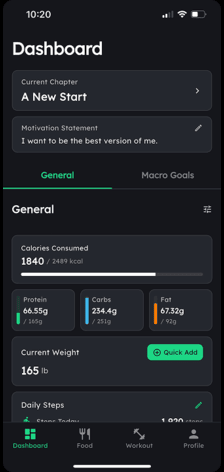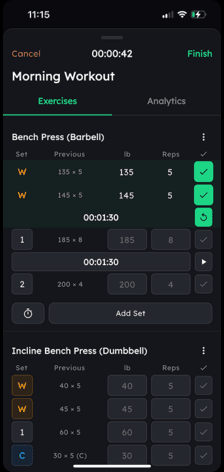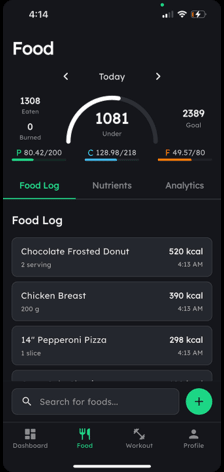Why Your Progress Stalls Even When You Track Everything
You do everything right. You show up to the gym, open your notebook or app, and diligently log every set, rep, and weight. You have months of data. But when you look back, the numbers are not really moving. Your bench press has been stuck for weeks, and you feel more busy than productive.
This is the most common frustration we see. People put in the effort to track, but they track the wrong things. They collect data without a system for using it. The act of logging feels like progress, but it is just motion without direction. Your workout log becomes a graveyard of good intentions rather than a roadmap to your goals.
The problem is not your work ethic. The problem is your method. You are focusing on the details of a single tree and missing the direction of the entire forest. This leads to burnout and the feeling that your hard work is wasted. Soon, you will learn that the secret is not tracking more, but tracking smarter.
More Data Does Not Mean More Muscle
Here is the counterintuitive truth. Tracking individual workouts is a waste of time. The only metric that builds muscle is weekly training volume. Volume is the total amount of work you do, and it is the primary driver of muscle growth, a principle known as progressive overload. Focusing only on the weight you lifted today is like judging a company's success by a single day's stock price. It is noisy and misleading.
Most people think progressive overload means adding more weight to the bar each week. This is a fast path to injury and frustration. True progress is slower and more methodical. It comes from small, consistent increases in total work. Your body does not adapt to one heroic lift. It adapts to the cumulative stress you place on it over weeks and months.
When you stop tracking isolated workouts and start tracking your weekly volume trend, everything changes. You shift from hoping for progress to engineering it. The goal is no longer to just 'beat the logbook' for one session. The goal is to ensure this week's total volume is slightly higher than last week's. Here is exactly how to do it.
The 3-Step System to Track Workouts for Growth
This system moves you from simply recording numbers to making strategic decisions that guarantee progress. It is based on one simple formula that governs muscle growth.
Step 1. Calculate Your Baseline Volume
Before you can improve, you need to know your starting point. Volume is calculated with a simple formula. Sets × Reps × Weight = Volume. For each exercise, you will calculate this number and then add them all up for a weekly total.
For example, if you bench press 3 sets of 10 reps at 150 lbs, your volume for that exercise is 3 × 10 × 150 = 4,500 lbs. If you do this twice a week, your weekly bench press volume is 9,000 lbs. Do this for every exercise in your plan to find your total weekly volume. This number is your baseline.
Step 2. Aim for a 2-5% Weekly Volume Increase
Progress is not about huge leaps. It is about small, sustainable steps. Aim to increase your total weekly volume by just 2-5%. This small increase is enough to stimulate muscle growth without overwhelming your body's ability to recover. Pushing for more than this often leads to burnout or injury.
If your total weekly volume was 50,000 lbs, next week's target is between 51,000 lbs (a 2% increase) and 52,500 lbs (a 5% increase). This small, manageable target gives you a clear objective for every workout. You are no longer guessing what to do. You have a precise mission.
Step 3. Prioritize Reps and Sets Over Weight
How do you increase volume? Most people immediately try to add weight. This is often the least effective way. The easiest and safest way to increase volume is by adding one or two reps to your sets, or adding an extra set.
Consider our bench press example. 3 sets of 10 at 150 lbs is 4,500 lbs of volume. Adding 5 lbs to the bar (3x10 at 155 lbs) brings the volume to 4,650 lbs. But what if you just added one rep to each set? 3 sets of 11 at 150 lbs is 4,950 lbs of volume. You added more volume with less joint stress. You can calculate this for every exercise with a notebook or spreadsheet, but it can be tedious. This is where an app can save time. Mofilo automatically calculates your total volume after each workout and shows you the week-over-week percentage increase, so you know if you are on track.
From Stagnant Lifts to Predictable Progress
When you adopt this volume-centric approach, the entire dynamic of your training changes. Guesswork is replaced with certainty. You no longer walk into the gym hoping to feel strong. You walk in with a precise, calculated target that you know is achievable.
Your progress becomes predictable. Instead of hitting a wall after a few months, you will see small but consistent improvements week after week. This method turns your workout log from a historical document into a predictive tool. You are not just recording what you did. You are planning what you will become. This is the foundation of long-term, injury-free strength gain.
Frequently Asked Questions
What is the best way to track workouts?
The best way is the one that measures total volume (sets x reps x weight) and allows you to see your week-over-week trend. Whether you use a notebook, a spreadsheet, or an app, the goal is to ensure your total volume is increasing by 2-5% weekly.
Should I add reps or weight first for progressive overload?
For most people, adding reps first is safer and more effective for increasing volume. Adding one rep is a smaller, more manageable jump than adding 5 or 10 pounds to the bar. Once you reach the top of your target rep range (e.g., 12 reps), then increase the weight and drop back to the bottom of the range (e.g., 8 reps).
How do I track workouts if I do bodyweight exercises?
For bodyweight exercises, you can track volume by assigning a value to your body weight or by focusing on increasing total reps. You can also make the exercise harder by changing the angle or adding a pause. The principle remains the same. Make the total work slightly harder each week.
All content and media on Mofilo is created and published for informational purposes only. It is not intended to be used as a substitute for medical advice or treatment. Users should always consult with a doctor or other healthcare professional for medical advice. If you have or think you are at risk of developing an eating disorder, do not use the Mofilo app and seek immediate medical help.





